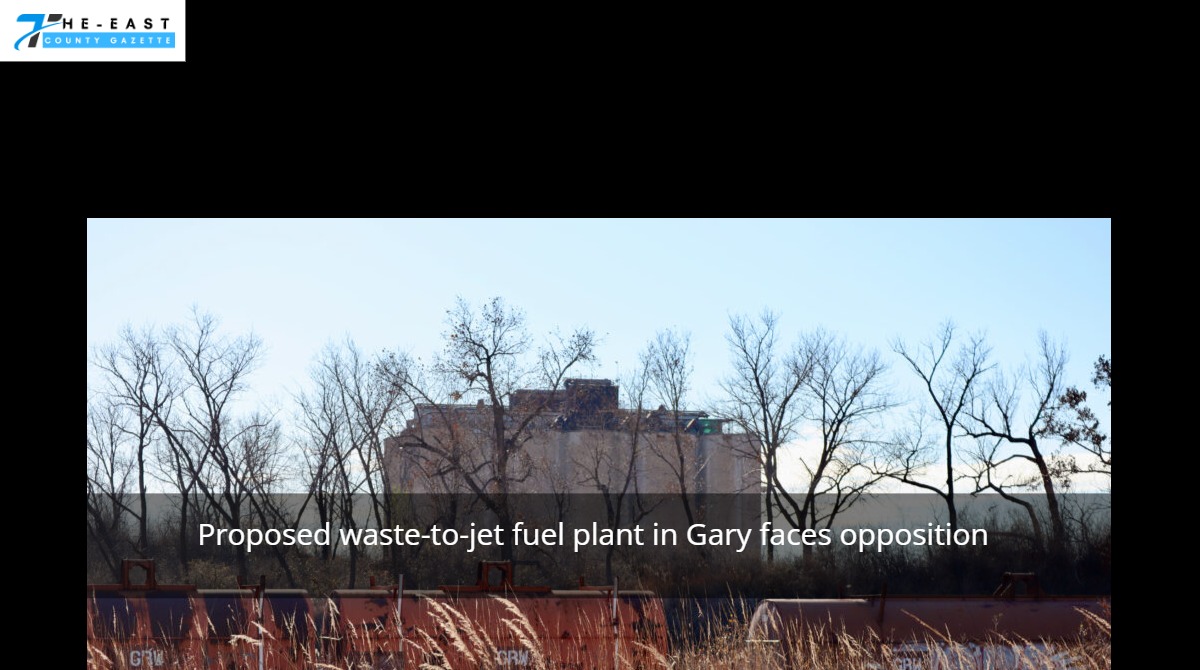For Lori Latham and four other self-described “badass women,” the future of their hometown rests on a battle over 75 acres that lie between a giant steel mill and a failed casino once owned by Donald Trump.
The site sits behind parked railroad cars painted in graffiti, where abandoned concrete silos rise from the sandy southern shore of Lake Michigan, a remnant of a former cement plant that helped build the country’s interstate highway system. Here, a California company called Fulcrum BioEnergy wants to construct a gasification plant and refinery to turn the Chicago area’s trash—as much as 30 percent of it waste plastic—into jet fuel.
It’s a bid, according to Fulcrum, to make a dent in the airline industry’s contribution to climate change while reducing waste at landfills. The city’s mayor, Jerome Prince, touts what he sees as a green energy future in this once-booming vestige of the Rust Belt.
But Latham and the group she co-founded, Gary Advocates for Responsible Development, along with some national environmental experts, smell a ruse.
They question the company’s claims of sustainability in what amounts to a complicated, high-energy production process, and the company’s ability to deploy a new combination of technology intended to turn the trash and plastic waste into a gas used to make aircraft fuel. They also say it’s unfair to locate the plant in an environmental justice community already burdened disproportionately by a century of pollution from heavy industry.
“This is one of the most energy-intensive processes I have reviewed in my career,” she said. “That’s a massive carbon footprint.”
In the Fulcrum proposal, Earthjustice attorney James Pew sees an illustration of a national trend in which facilities that burn waste, including plastic, through a process like gasification or a similar method called pyrolysis, are working to skirt health protections in the Clean Air Act.
“This whole fight at the local, state, and federal levels is about getting gasification and pyrolysis incinerators rebranded as non-incinerators so they can … avoid installing pollution controls and monitoring and reporting their emissions,” Pew said. “EPA’s regulations have defined facilities like Fulcrum as incinerators for almost 30 years.”
GARD is organizing opposition among area residents. It’s challenged the proposed plant’s air pollution permit from Indiana state regulators. And it has filed a Civil Rights Act complaint with the U.S. Environmental Protection Agency. The complaint argues that the Indiana Department of Environmental Management’s decision to grant Fulcrum its air permit is part of a longstanding pattern and practice of local discrimination on the basis of race, color and national origin.
Gary’s 68,000 residents, down from 175,000 in 1970, are 78 percent Black. One in three city residents lives in poverty.
For its part, Fulcrum, based in Pleasanton, California, is a sharp contrast with Gary. An affluent suburb of San Francisco with a poverty rate of 5 percent, it touts the economics of making what it describes as an $800 million investment in Gary, providing about 1,000 construction jobs and 130 to 200 permanent jobs.
“We just feel that we have created, designed and now are just a short time away from proving that garbage-to-fuel is possible,” said Fulcrum’s vice president of administration, Rick Barraza. “It’s doable, and it is a sustainable source of renewable fuel going forward.”
He also dismissed the Gary residents’ opposition and encouraged Inside Climate News to do the same. “I certainly hope that you don’t give too much time to the local citizens that just don’t want that facility in their backyard,” Barraza said. “There’s a local group out there that just doesn’t want the project. And so they’re starting to get vocal.”

